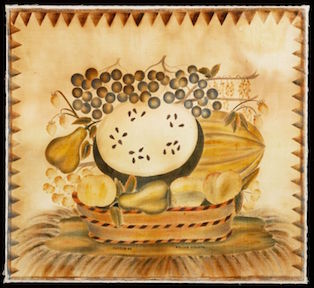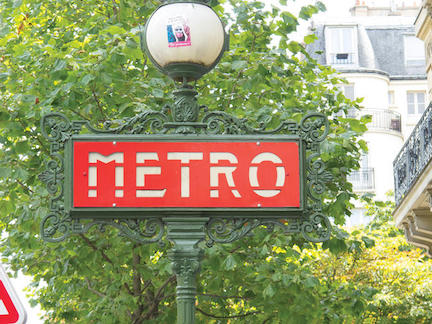Historical Item
100 Year-Old Hobo Graffiti Under LA Bridge
Anthropologist Follows Los Angeles Trail of Century-Old Hobo Graffiti
By John Rogers
AP LINK
Anthropologist Susan Phillips walks along the Los Angeles River while searching for graffiti by hobos in Los Angeles, May 16, 2016. Phillips had spent a career examining the graffiti that covers urban walls, bridges and freeway overpasses. But when she came across a heretofore unrecognizable collection made not of spray paint but substances like grease pencil and apparently left there for a century, she was stunned.
Anthropologist Susan Phillips had spent a career examining the graffiti that covers urban walls, bridges and freeway overpasses.
But when she came across an unrecognizable collection made not of spray paint but substances like grease pencil and apparently left there for a century, she was stunned.…
Read moreHugo Kaagman - Stencil King (Video) [U]
Spraying a wall in 1987 on the Ru Pare School in Amsterdam with spraycans and stencils by Hugo Kaagman, the film is made by Alex Vinkenoog, son of the legendary Hippie King Simon Vinkenoog
The Handcrafted Paper Stencils of a Kimono Designer Who Turned to Prints

The Handcrafted Paper Stencils of a Kimono Designer Who Turned to Prints
by Claire Voon on February 24, 2016 for Hyperallergic
For decades, the late Japanese artist Yoshitoshi Mori worked as an established kimono designer, using a stencil-based technique to dye his textiles. When he shifted his focus entirely to printmaking in 1960 after experimenting with the medium, he continued working with this layered design method. His resulting wealth of kappazuri — works produced with carefully hand-cut paper stencils — drew from the mingei folk art movement of the ’20s and ’30s that cherished handicraft. Looking further back into Japanese visual traditions…
A Journey to the Oldest Cave Paintings in the World
 A Journey to the Oldest Cave Paintings in the World
A Journey to the Oldest Cave Paintings in the World
The discovery in a remote part of Indonesia has scholars rethinking the origins of art—and of humanity
By Jo Marchant
The Smithsonian Magazine, January 2016
I struggle to keep my footing on a narrow ridge of earth snaking between flooded fields of rice. The stalks, almost ready to harvest, ripple in the breeze, giving the valley the appearance of a shimmering green sea. In the distance, steep limestone hills rise from the ground, perhaps 400 feet tall, the remains of an ancient coral reef. Rivers have eroded the landscape over millions of years, leaving behind a flat plain interrupted by these bizarre towers, called…
Read moreVOX Tracks Kilroy Across WWII War Zones (Video)
We know about the epic drama of World War II, but what about the jokes? The above video tells the story (as best as we can). The iconic piece of graffiti that was known, in America, as "Kilroy Was Here" traveled the world in a fashion remarkably similar to a modern meme.
Theorem Art in Williamsburg, VA
 Colonial Williamsburg presents theorem art at Abby Aldrich Rockefeller Folk Art Museum
Colonial Williamsburg presents theorem art at Abby Aldrich Rockefeller Folk Art Museum
By HOLLY PRESTIDGE Richmond Times-Dispatch | Posted: Saturday, December 5, 2015 10:30 pm
“Theorem work,” a popular method of watercolor stencil painting on fabric, wood and paper, was used to decorate everyday objects and create decorative pictures in the 19th century.
An exhibit highlighting the artwork, which was popular as a skill for women, is on display in Colonial Williamsburg.
“Folk art enthusiasts have long associated the art of stencil with 19th-century collections, and we’re excited to share this important and vibrant form of…
Patti Smith Stencils a Wall (1972, NYC)
"We decided to leave [our Twenty-third street loft] on October 20, 1972.... Robert [Mapplethorpe] and I stood together alone in my section of the loft. I had left some things behind - the lamb pull toy, an old white jacket made of parachute silk, PATTI SMITH 1946 - stenciled on the back wall- in homage to the room like one leaves a portion of wine to the gods." - Just Kids by Patti Smith (p. 208)
Art and Gentrification: Everything Must Go....
[From Stencil Archive: At what point is public art part of the problem of gentrification? When is corporate manipulation and intrusion too much for a community to bear? Can public art be created without thinking about the environment, the wall it is painted on, and the community in mind? What are the limits of making money for one's art as opposed to the created pieces being part of the problem of massive evictions and migrations of lower-income and working class populations? These questions have been stewing for months now, and there is surprisingly little writing on these issues. Megan Wilson, co-curator of the Clarion Alley Mural Project, pushes back and contemplates these sometimes blurry lines between selling out and paying the rent. Below is an essay she wrote that touches on some of the above questions. For a much better version, with photographs and links, please go to…
Read moreShepard Fairey's Arrest Begs Question: Art or Vandalism?
 How Shepard Fairey's arrest provides a new look at an old question: Is it art or is it vandalism?
How Shepard Fairey's arrest provides a new look at an old question: Is it art or is it vandalism?
By DEBORAH VANKIN AND DAVID NG (LA Times)
Shepard Fairey has never been one to play by the rules — and that's par for the course for someone in a street art community that exists on the cultural margins.
Or does it?
The L.A.-based street artist and graphic designer, best known for his 2008 "Hope" poster timed with Barack Obama's presidential campaign as well as the "Obey" image seen on posters and T-shirts worldwide, was arrested last week while passing through customs at Los Angeles International Airport. Authorities there noticed that Detroit police had issued a…
Why Stencil Typography Is Here To Stay
 Why Stencil Typography Is Here To Stay
Why Stencil Typography Is Here To Stay
(from fastcodedesign.com; photo by Louise Fili)
DESIGNERS LOUISE FILI AND STEVEN HELLER COMPILE 60 YEARS OF STENCIL TYPE FROM 8 COUNTRIES AND REVEAL WHY THE PRIMITIVE STYLE STILL REIGNS.
The stencil is one of the world’s most primitive printing techniques. It dates back to prehistory, with stencils found in caves, in the art of ancient China and Japan, and in the crafts of indigenous people worldwide. Stencil typefaces are still popular today, whether in the form of new, witty takes on the genre, like Der Weiner Stentzel’s sausage shapes for letterforms, or vintage typefaces redrawn as stencils, like Bodoni or Century.
…
Read more